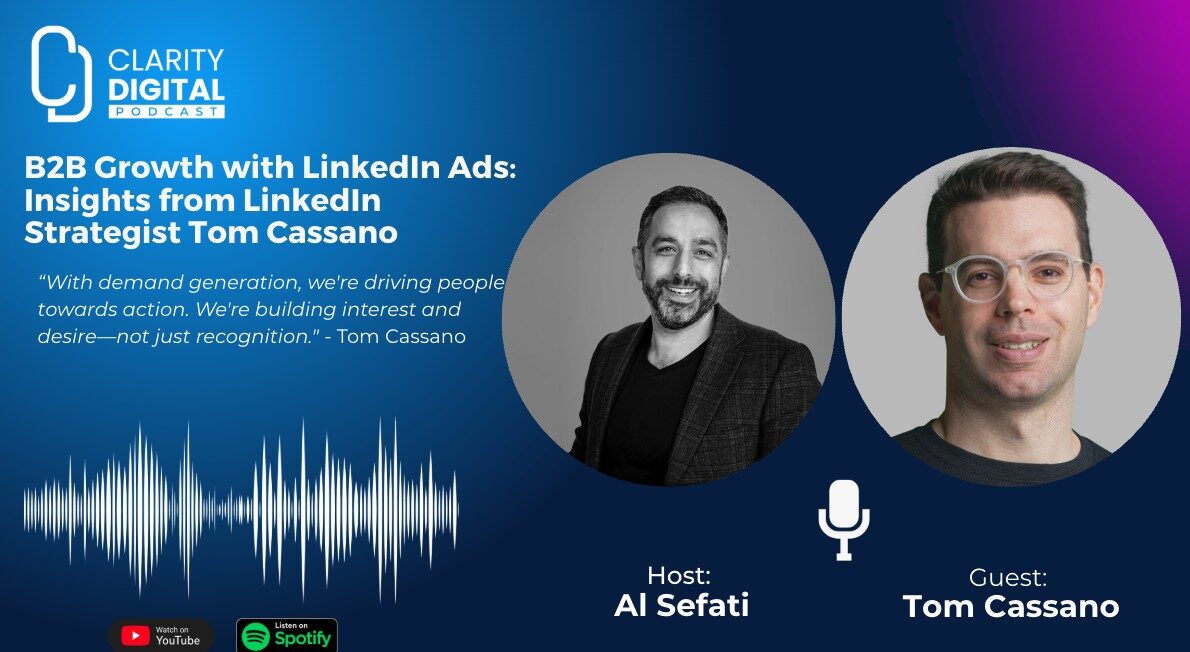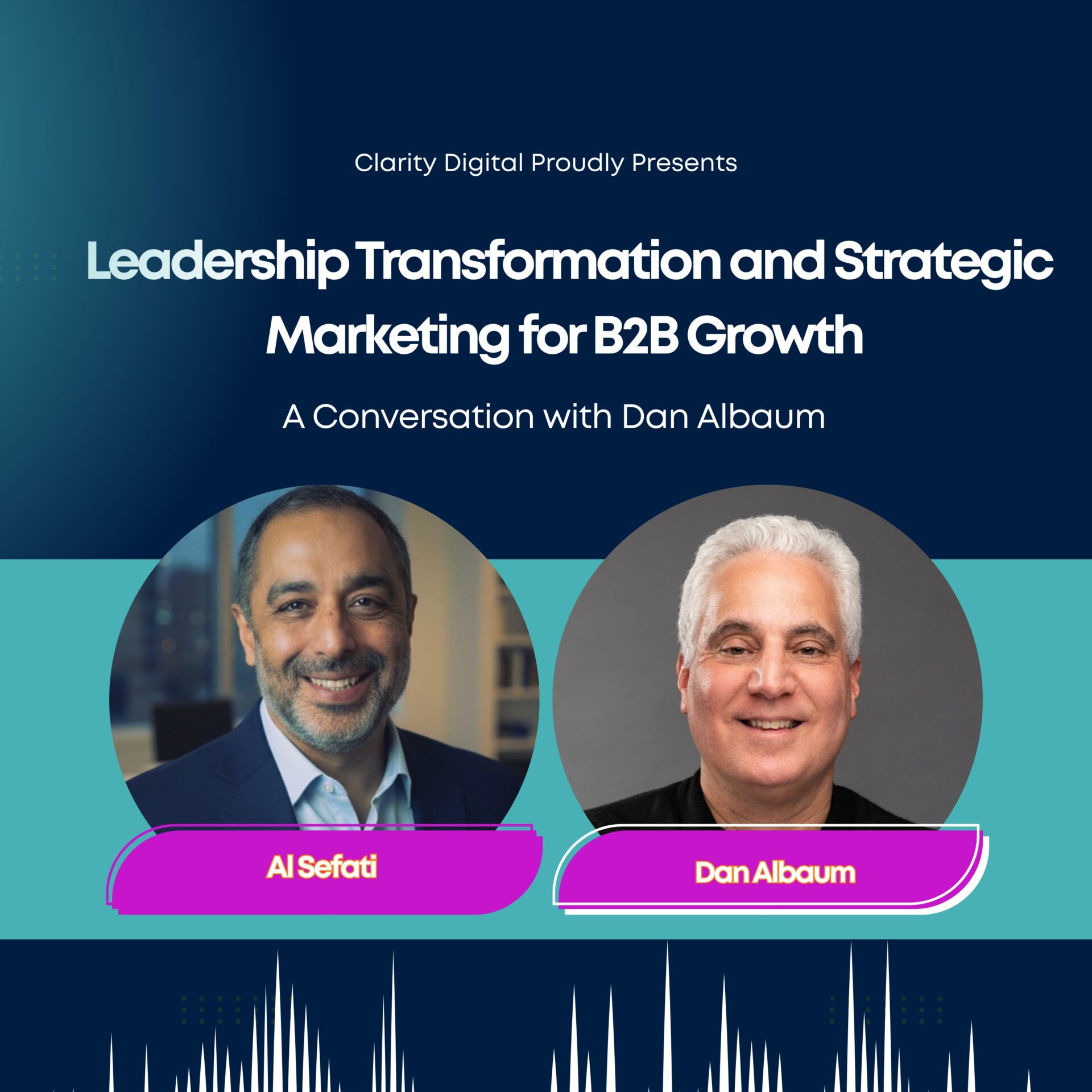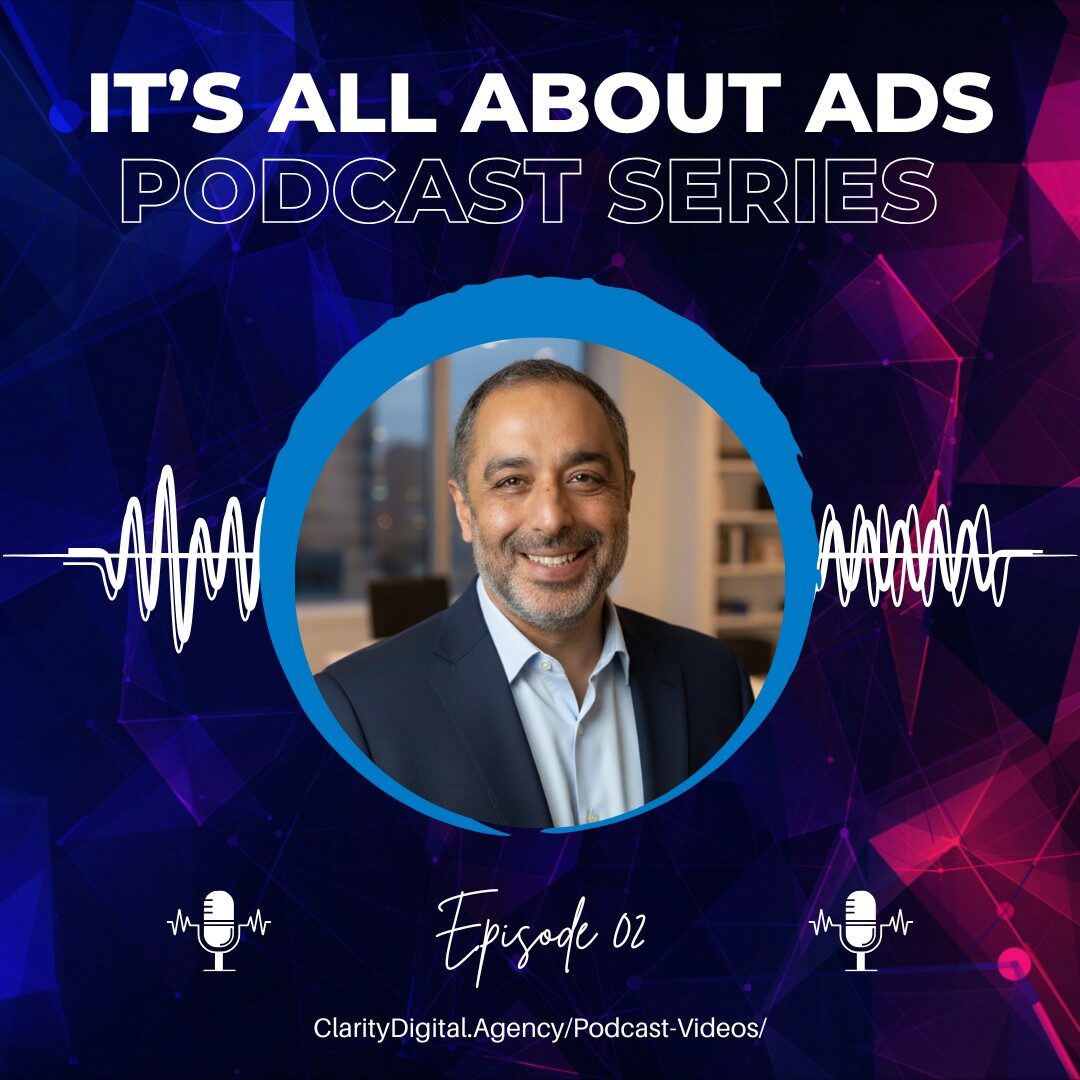Welcome to another episode of Clarity Digital Pod. My name is Al Sefati and in this session, I sat down with Tom Casano, a seasoned B2B marketer and founder of Tamarind, a certified LinkedIn Ads agency. With over $50 million in managed LinkedIn ad spend and 12+ years of marketing experience, Tom brings deep insights into the evolving world of B2B digital advertising.
From demystifying demand generation to dissecting the power of retargeting and AI in LinkedIn campaigns, this episode covers everything B2B marketers need to know to stay competitive in 2025. Let’s get into it.
Meet Tom Casano: A Data-Driven Strategist in B2B LinkedIn Advertising
Tom Casano isn’t new to the game. As the founder of Tamarind, a certified LinkedIn ads agency, he and his team have executed thousands of campaigns, managing over $50 million in ad spend. With all four LinkedIn certifications under his belt, Tom brings both technical expertise and practical know-how to the conversation.
LinkedIn’s targeting precision, particularly for B2B, is Tamarind’s bread and butter. But with higher ad costs than Meta or Google, Tom emphasizes the need for strategic thinking when allocating budget.
Brand Awareness vs. Demand Generation: What’s the Real Difference?
One of the most critical distinctions Tom draws is between brand awareness and demand generation. While both have value, understanding their roles and how they affect pipeline and revenue is essential.
“Brand awareness is just people knowing who you are. It’s not going to drive action. You could spend $100,000 and see zero pipeline,” Tom explains.
Brand awareness introduces your name, logo, and presence to the market—but it doesn’t build desire. That’s where demand generation steps in. Demand gen digs deeper by identifying pain points and offering solutions. It doesn’t just put your brand in front of people; it makes them care.
This approach mirrors classic marketing principles—highlighting benefits, solving pain points, and presenting value propositions that inspire action.
Is LinkedIn Better for Brand or Demand Generation?
According to Tom, LinkedIn can serve both purposes, but its true value lies in its precise targeting capabilities. LinkedIn enables marketers to zero in on firmographic data—job titles, seniority, industry, company size, geography, and more.
This targeting power means marketers can deploy any strategy—brand awareness, thought leadership, full-funnel marketing, or lead generation—and know it’s reaching the right audience.
That said, because LinkedIn is more expensive than platforms like Meta, startups and smaller companies must be even more strategic about how they allocate spend between branding and demand campaigns.
Demand Generation vs. Lead Generation
The conversation gets even more nuanced when comparing demand generation to lead generation. While the two often overlap, they serve different stages of the funnel.
“People download content all the time without having any real interest in your product,” Tom points out.
Tom emphasizes that a simple download doesn’t indicate true buying intent. Traditional lead generation often collects MQLs (marketing qualified leads) that may never convert. In contrast, demand generation focuses on educating the market, building interest, and creating informed buyers who are much more likely to convert to SQLs (sales qualified leads).
Al Sefati adds from his own experience that addressing pain points during high-demand periods—such as the Google Analytics Universal to GA4 migration—can organically generate leads and build long-term client relationships.
How to Identify the Right Pain Points In B2B Marketing?
So how do you know which pain points to focus on?
Tom advises using metrics like click-through rates (CTR) and dwell time to assess which messages are resonating. A CTR above 1% on LinkedIn is considered strong, while anything below 0.5% likely needs revision.
Additionally, newer metrics like Dwell Time—how long users engage with your ad without clicking—can reveal how captivating your content is, especially to lurkers who don’t always engage directly.
LinkedIn Retargeting: The Overlooked Goldmine
Tom stresses that LinkedIn’s retargeting capabilities have quietly become one of the platform’s most powerful features. Unlike traditional retargeting, which is limited to website visits, LinkedIn allows retargeting based on:
- Video views
- Document ad engagement
- Lead gen form opens
- Company page visits
- Ad clicks
- Event RSVPs
- And more
You need at least 300 people in a retargeting audience for it to activate, but once it’s live, it enables marketers to move prospects down the funnel with precision—e.g., from a pain-point awareness ad to a case study to a call-to-action.
LinkedIn Lead Gen Forms vs. Landing Pages
One area where Tom sees consistent underperformance is marketers driving LinkedIn ad traffic to landing pages.
“You’re on mobile, you click, wait for the page to load, then fumble with a form. Friction kills conversions.”
Instead, LinkedIn’s native lead gen forms reduce friction by auto-populating fields with the user’s profile data, allowing one-click submissions.
Some argue that this results in lower-quality leads. Tom disagrees. He suggests that the targeting controls and additional form customizations—like filtering for work emails or adding qualifying questions—can ensure the leads are still high-intent.
The big benefit: cost per lead drops significantly, sometimes from $800 to $200, which improves ROI dramatically.
Creative and Gated Content: Still Worth It in the Age of AI?
With AI tools offering instant access to information, gated content is under scrutiny. Both Al and Tom agree: it has to be exceptional to warrant an email address.
Tom suggests focusing on original insights, data, or formats people can’t get elsewhere. Document ads, which allow previews before a download gate, are performing especially well on LinkedIn.
He also reminds marketers not to overlook presentation: a mediocre asset with compelling creative will outperform a brilliant piece that looks boring.
Leveraging AI for LinkedIn Marketing
Both Al and Tom admit to feeling overwhelmed by the sheer volume of AI tools popping up daily. Tom has tested LinkedIn’s auto-generated campaigns and found them lacking:
“You get generic copy and generic visuals. It’s a waste of money.”
Instead, he recommends using AI for:
- Generating ideas for lead magnets
- Outlining gated content
- Writing ad copy
- Targeting ideation
- Image generation using tools like DALL·E and Midjourney
- And automating workflows with tools like n8n
But both emphasize: AI should augment human strategy, not replace it. You still need to deeply understand your audience and craft messaging that speaks to real human pain points.
Final Thoughts: Strategy Over Automation
Tom and Al wrap up by aligning on a core truth: demand generation is a long game. While lead gen provides immediate gratification, the real value in B2B comes from building trust and understanding over time.
Al sums it up best:
“Don’t limit yourself too much at the top of the funnel. Focus on nurturing after capturing the lead.”
Tom agrees, adding that success on LinkedIn comes from balancing quality creative, smart targeting, and strategic sequencing across the funnel.
About Tom Casano and Tamarind
Tom Casano is the founder of Tamarind, a certified LinkedIn Ads agency specializing in B2B demand and lead generation. With a strong focus on strategy, campaign execution, and retargeting, Tom helps companies maximize ROI on LinkedIn through data-backed advertising.
You can learn more at Tamarind Agency or connect with Tom directly on LinkedIn.




